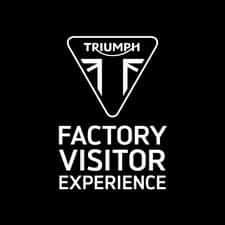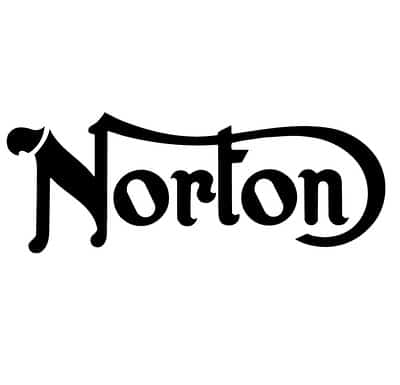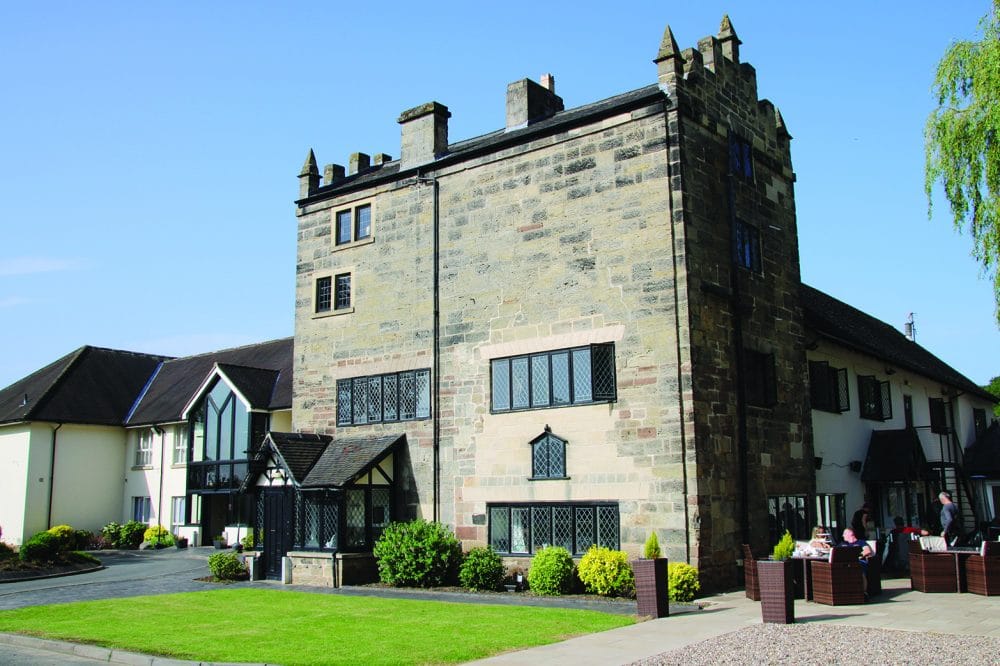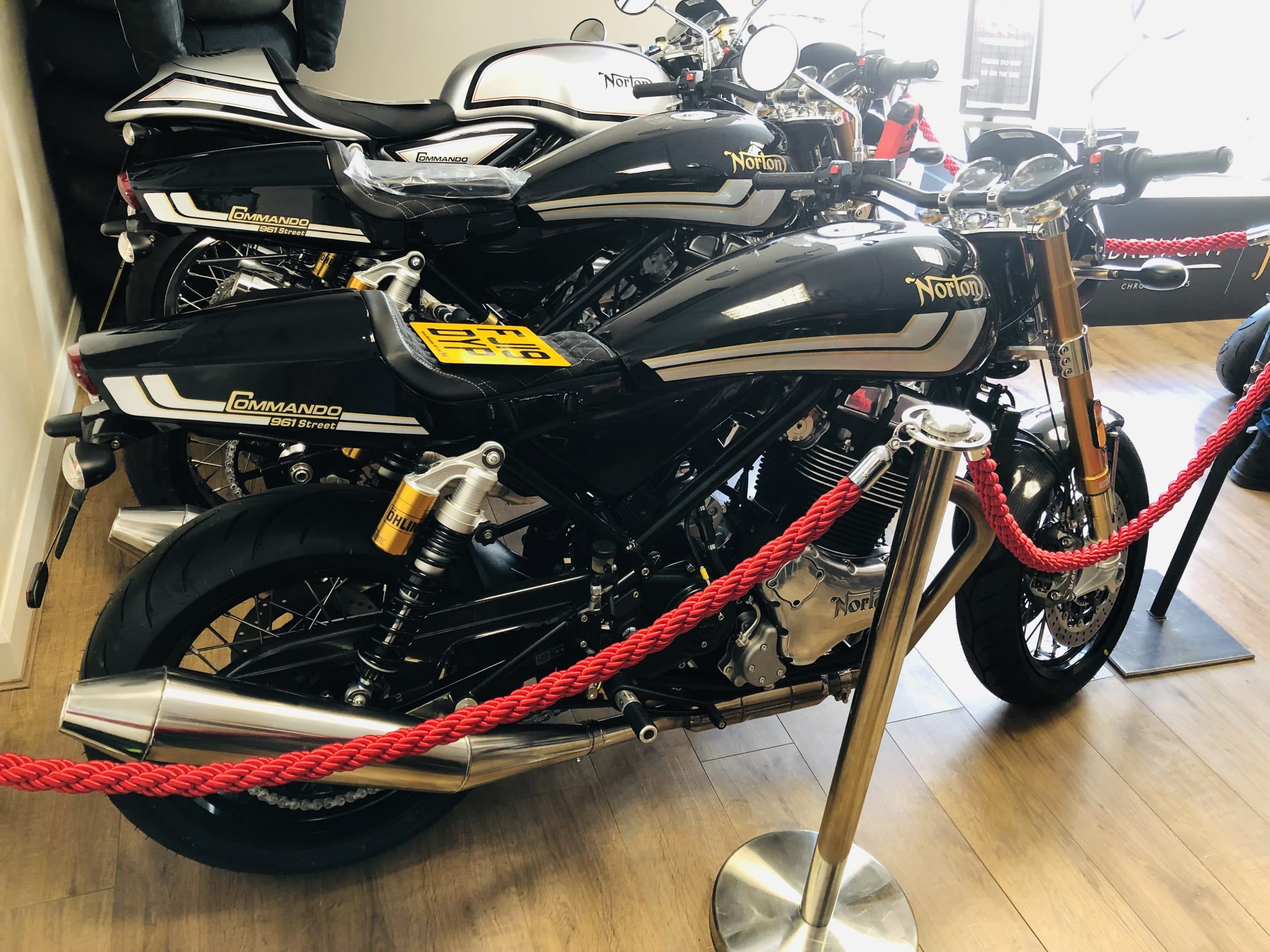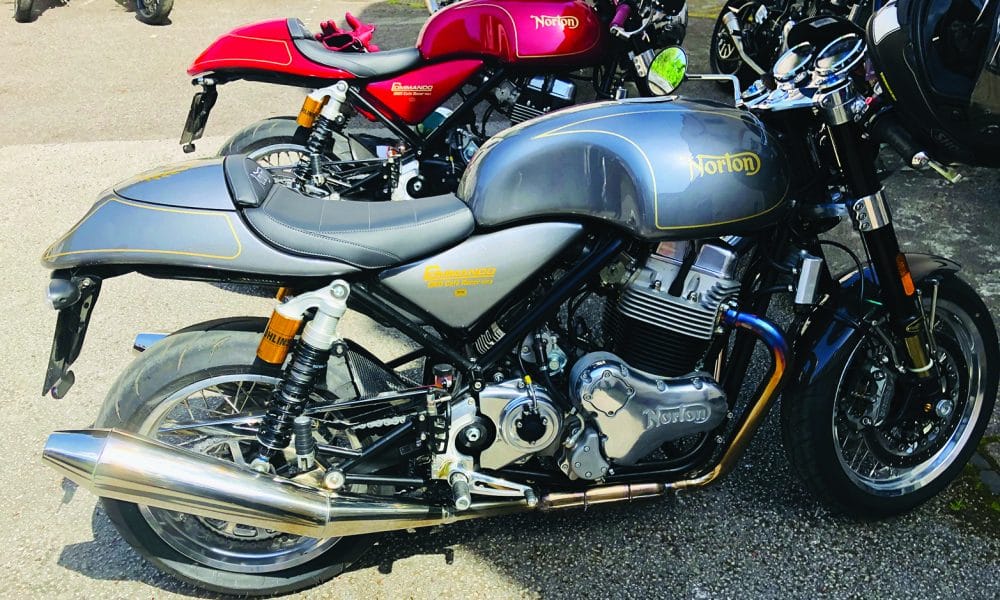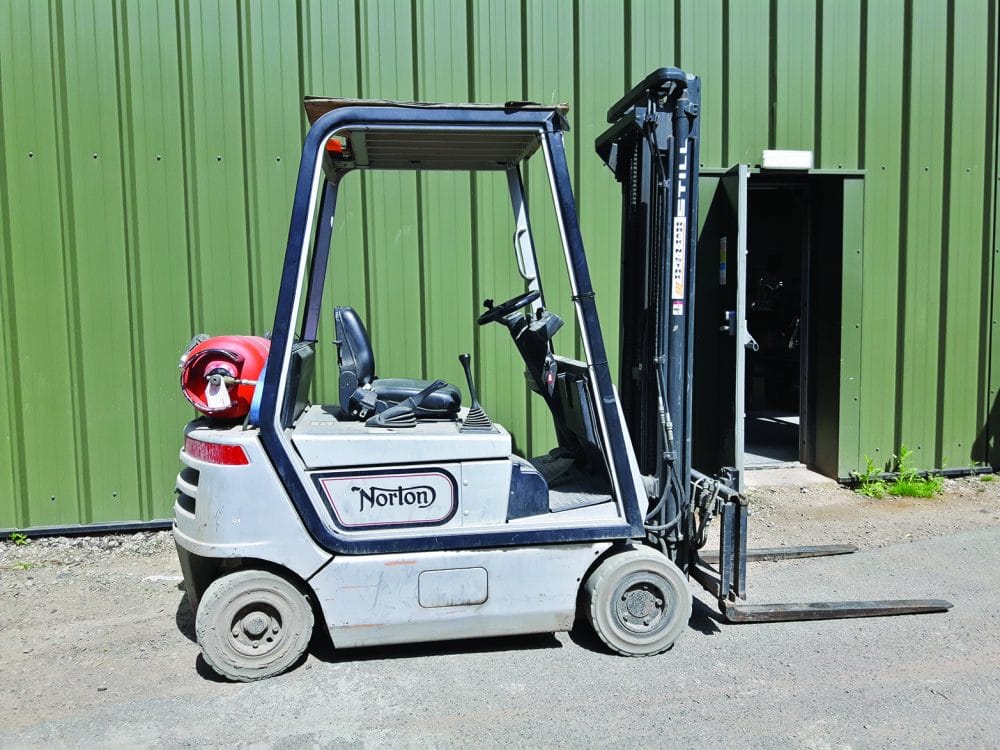Triumph has been around since 1902. In its heyday the company was one of the world’s most successful motorcycle brands, but following sustained periods of low of investment and the arrival of Japanese competition in the 70s, the business collapsed in 1983. John Bloor, a property developer who had attended the auction to buy the land on which the old factory sat, decided instead to buy the name and rebuild the company.
The new Triumph ‘Hinckley’ range was launched in 1992 and the Phoenix was reborn.
They now make around 65,000 machines a year, and expect to produce their millionth motorcycle this year.
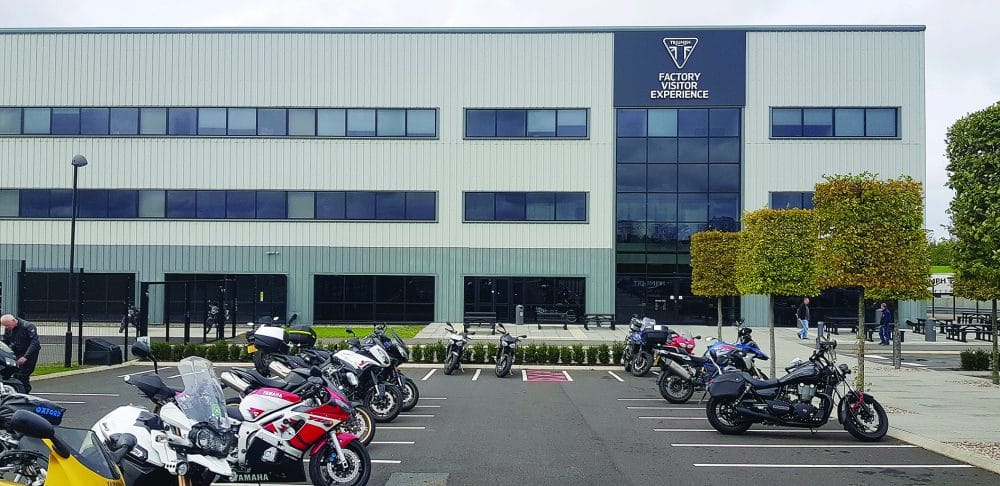
My visit started early with full wet-weather gear to get to Beaconsfield services in the pouring rain for an 8:30 briefing by Nigel Winstanley, who had organised the visit and was also trying his hand at being a run leader for the first time. His own KTM was off the road, so he had borrowed a replacement bike. With torrential rain forecast, a last-minute change of route was also in order. Given all these challenges it was perhaps surprising that the only thing to go wrong on the day was that Nigel couldn’t figure out how to get the tank bag off his loan bike to fill it up. Fortunately one of our group suggested he look for the key inside the tank bag.
The weather gods were looking down on us as the rest of the journey stayed dry. We had a very pleasant stop for breakfast at Reg’s Café in Banbury, a nice biker-friendly place with good food. We all arrived at Hinckley by 1pm in good time for our factory tour.
The visitor centre is an impressive new facility, opened in 2017.
Next to the café is a well-presented exhibition on two levels illustrating the history and technology of Triumph Motorcycles up to the present day.
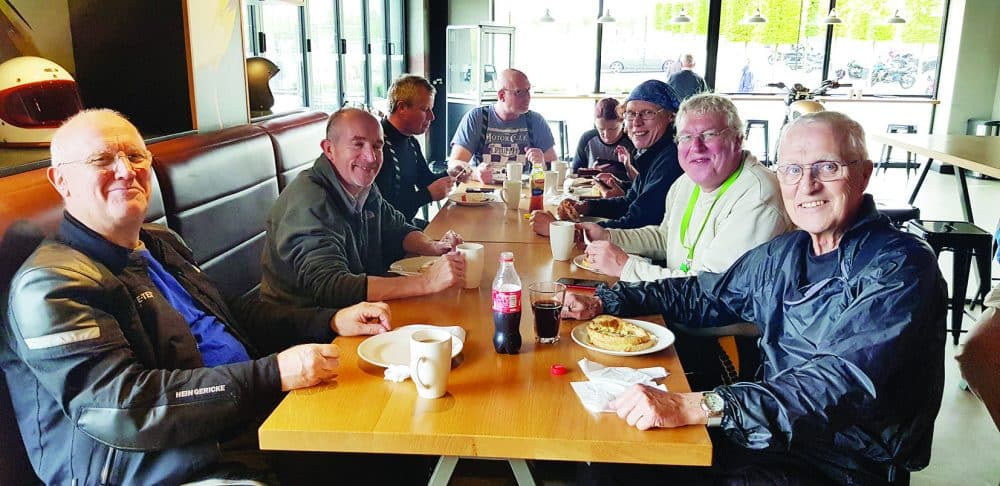
Our guide Robert gave us the full 2 hour tour. It can be done in 90 minutes, but we asked far too many questions. The factory was not operating at the time, but it was obvious that they had set up with visitors in mind. There were video presentations in all the key areas, and other static displays, typically showing examples of the manufacturing process that key components go through.
Triumph is now a global business with factories in Thailand and final assembly plants in India and Brazil. Thailand is where they have their diecasting plant and injection moulding factory, as well as final assembly of selected models such as the new Rocket 3 and the Bonneville range. The Hinckley plant produces around 15,000 machines annually, mainly Tiger 1200s, Tiger Sports and Speed Triples. In order to avoid high local import tariffs, the factories in Brazil and India assemble finished bikes from kits of parts shipped from the UK.
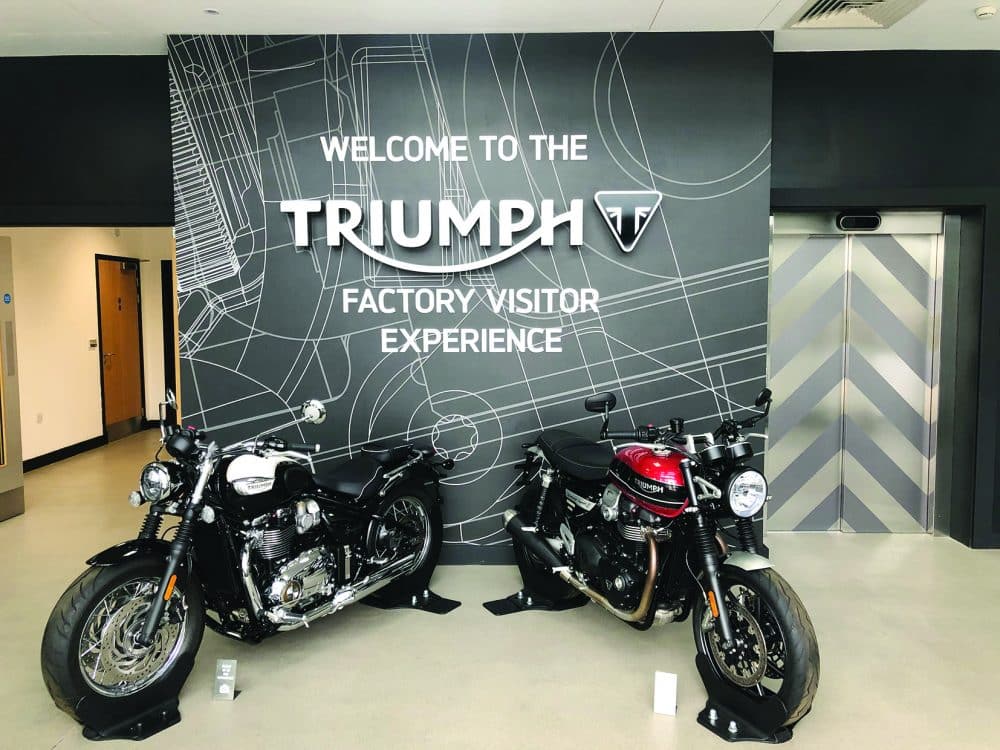
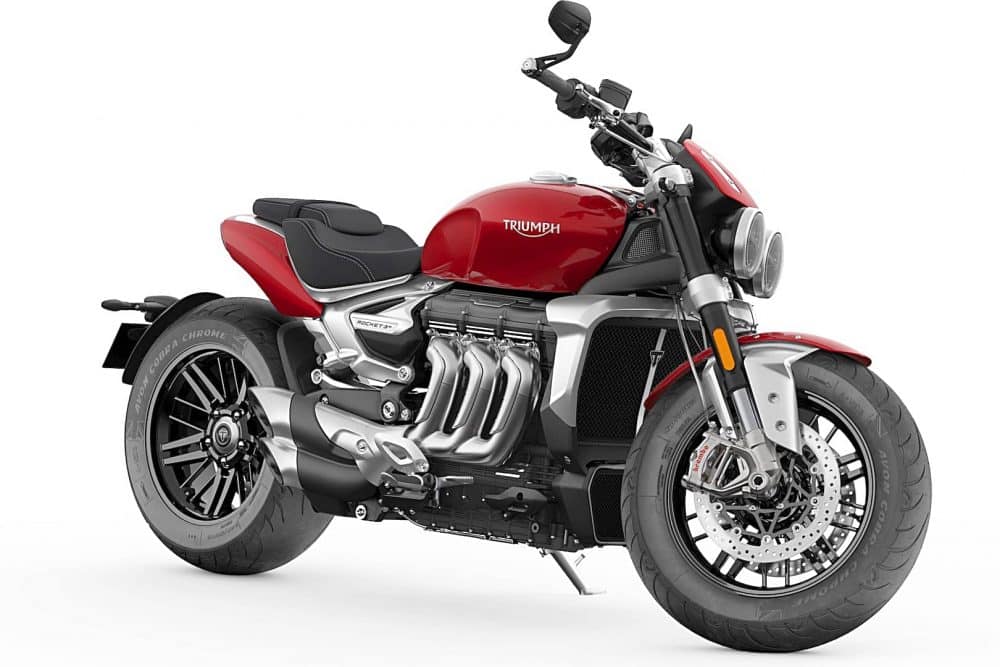
The Triumph Rocket 3R
Robert explained that they build most bikes to order, with a mixed model line depending on demand. The only time they make a large batch of the same bike is when they build launch stock to introduce a new model.
Much of the Hinckley factory is dedicated to machining engine casings and crankshafts, plus the finish grinding of camshafts and cranks. We got a strong impression of how important consistent quality is in the manufacturing process. They take samples of crankshafts after they have been cleaned and washed. They pass the cleaning fluids through a fine filter and measure the amount of dirt particles trapped. Robert reckoned that a well-maintained Triumph engine is good for 250,000 miles, with many customers who have achieved this.
There was a large screened-off research and development section where they develop new machines, with around 400 people employed in R&D. Regular employees are not normally allowed inside, and they only get glimpses of new machines as they are taken out on test rides. The dedicated road-testing team may look to have the dream job, but they ride out in all weathers, doing several hundred miles a day. It would soon lose its attraction to all but the most ardent rider. It typically takes Triumph three years to develop a new model from scratch.
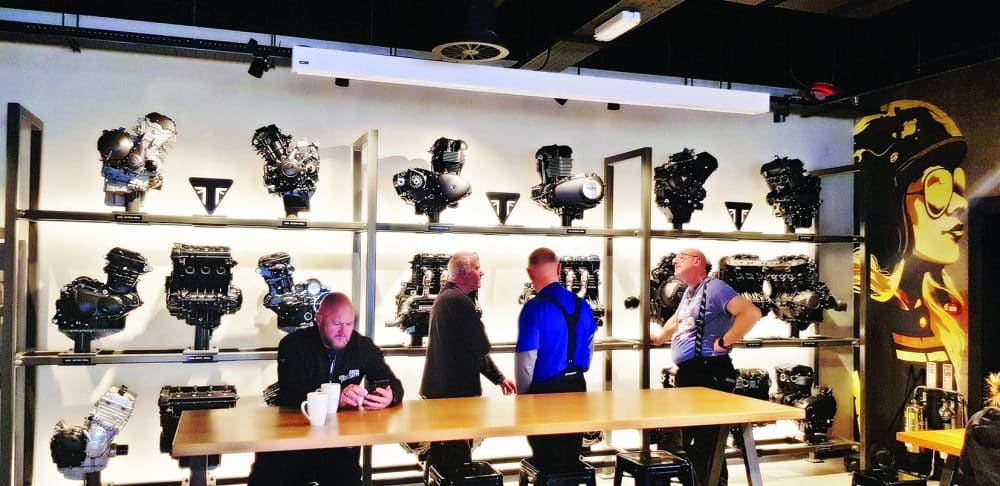
At the end of the tour we were shown an area where bikes were prepared for journalists to test. There were around 20 new Rocket 3s ready for the world’s press to try in November. Although supplied with tyres pre-scrubbed in by Mira, the journalists clearly take every chance to explore their limits, and one pre-production bike had already been back in the workshop for repair after one tester slid it down the road.
If you’re interested in modern production methods, or are just into Triumph motorcycles, you’ll find the factory tour a fascinating experience, a real study of precision manufacturing and global logistics.
My thanks to Andrew Whiteman for his help with the article.
Nigel Winstanley
First published in Slipstream January 2020

